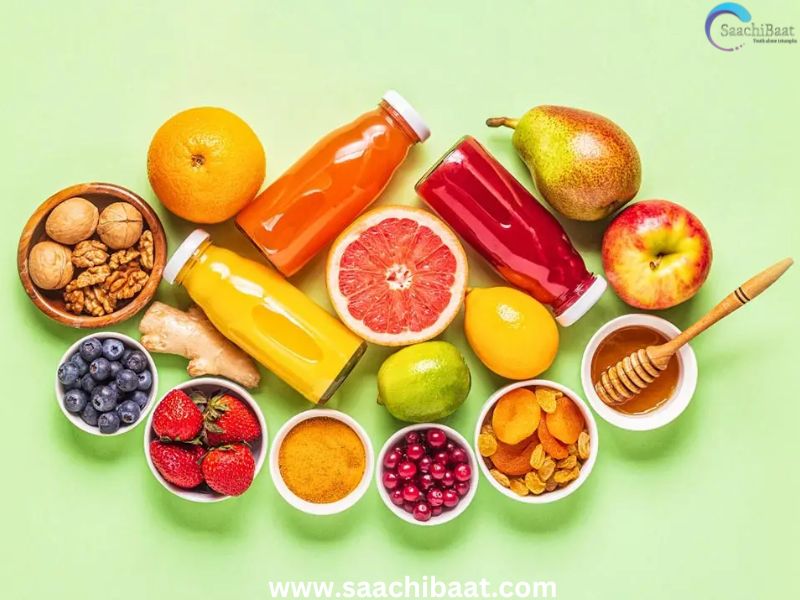While scientists in some parts of the world are exploring aeronutrition (getting nutrients through air) and nutritional psychiatrists are recommending forest bathing and clean, fresh air to cope with stress and anxiety, here in the city of Delhi, we are grappling with ways to combat the heavily polluted air we breathe.
Deciding what to write for my Substack piece this month was hardly difficult. Year after year, in the weeks after Diwali, the air quality in many parts of the country plummets to hazardous levels. It’s hard to think—or even see—clearly. For those who can afford it, air purifiers, face masks, and travel plans offer some measure of protection.
Beyond these external measures, certain foods and dietary choices can help mitigate the effects of toxic air pollutants. While we are often led to believe that exotic superfoods like blueberries and avocados are essential in such situations, plenty of common, everyday foods can serve the same purpose—and are much more accessible.
The Foundation of Protection: A Balanced Diet
A balanced diet remains the cornerstone of any protective approach. Brightly coloured fruits and vegetables are particularly beneficial.
Red-Orange Produce: Tomato, carrot, pumpkin, and watermelon.
Greens: Locally available, region-specific greens abound.
Purple-Blue Produce: Pomegranate, aubergine (brinjal), beetroot, grapes, and purple cabbage.
These foods, though easily available, often don’t make it to our daily meals. It’s time to bring them onto our plates.
Powerful Foods to Combat Air Pollution
Here are some potent foods that can help counteract the harmful effects of toxic air:
Bay Leaf (Tejpatta)
A study in South Korea tested over 100 fruits, vegetables, herbs, and spices for their ability to reduce oxidation in the body. Bay leaf topped the list. Add this dried leaf to your gravies for both flavour and health benefits.
Indian Gooseberry (Amla)
Long recognized for its health benefits, amla often goes underutilized. Incorporate it into chutneys or chew on amla candy to include it in your diet.
Matcha Green Tea
This antioxidant-rich tea can be sipped throughout the day, just like water, for continuous protection.
Moringa
The Moringa oleifera tree is a nutritional powerhouse. Its leaves can be cooked into a saag, and its pods (drumsticks) can be used in dishes to reap its numerous benefits.
Leafy Vegetables
Beyond moringa, other leafy greens such as spinach, kale, mustard, methi, lettuce, and amaranth (red, green, or mixed) are excellent antioxidant sources. Include them raw or cooked in generous amounts.
Lemongrass
This herb not only enhances the flavour of stews and gravies but also serves as a potent antidote to pollution due to its high polyphenol content.
Lemon Rind
Often discarded, lemon rind is rich in antioxidants and adds a burst of fresh flavor to dishes. Grate the rind before juicing the lemon to make the most of it.
Garlic
A powerhouse of antioxidants, garlic is a diet therapist’s tool against polluted air. Crush 3-4 raw cloves and add them to chutneys, salads, or dips. Avoid cooking garlic, as heat destroys its beneficial properties.
Egg Yolk
Often discarded due to concerns about cholesterol, egg yolks are an excellent source of Vitamin A, a potent antioxidant and anti-inflammatory agent—perfect for these times.
Jaggery
An ancient remedy for blood purification and cough, jaggery helps counter smoke-induced lung lesions. Made from sugarcane juice, it is packed with minerals, vitamins, and antioxidants derived from the soil.
Pomegranate
Packed with disease-fighting antioxidants, pomegranate juice or seed extract has an antioxidant capacity three times higher than green tea. Enjoy it at breakfast or add it to salads and raitas.
The three Ts: Tulsi, Turmeric, and Triphala
No discussion of protective foods would be complete without mentioning tulsi, turmeric, and triphala. These humble, readily available ingredients act as powerful shields against pollution.
Natural Air Purifiers
While these foods work from within, natural air purifiers like spider plants and peace lilies can be kept indoors to improve air quality.
The air we breathe may not be ideal, but with the right dietary choices and a few strategic additions to our homes, we can protect ourselves from the adverse effects of pollution. Let’s make the most of the resources available to us—both in our kitchens and our surroundings.
Neelanja Singh
 |
Ms. Neelanjana Singh, Nutrition Consultant & Author |


